
Simple diagram illustrating the process of photosynthesis and aerobic cellular respiration
- Subject:
- Living Systems and Processes
- Science
- Material Type:
- Homework/Assignment
- Lecture Notes
- Date Added:
- 06/03/2020

Simple diagram illustrating the process of photosynthesis and aerobic cellular respiration

Simple diagram illustrating the process of photosynthesis and aerobic cellular respiration

Simple diagram illustrating the process of photosynthesis and cellular respiration including an option with the chemical formula to accommodate different learning styles and provide differentiation.
Download this flow chart as a word document and share with students in google classroom or print the paper copies. Please feel free to edit and make any needed changes to make it relevant to your classroom.

Join Joe as he takes us on a fun investigation into the life of plants. Learn about the types of plants, and how plants survive in their environment. Explore vascular and non-vascular plants through an experiment using the scientific method—and celery! Learn about photosynthesis and dormancy and dive into the parts of plants and pollination. Plants are so important to our lives. Let's get to know them better!

Pollinators are a vital part of our world and are essential for creating and maintaining habitats that many animals – including us! – rely on for food and shelter. The diversity of pollinators in a particular area is a key indicator of the health of an overall ecosystem. Unfortunately, many pollinators are in trouble, with populations declining significantly around the world. This episode highlights the importance and function of pollinators, with an emphasis on what we can do in our homes and communities to ensure the survival of these important species. For more information and classroom activities, please visit The Wildlife Center of Virginia and VPM UNTAMED websites.
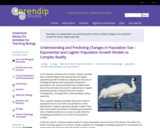
Students develop their understanding of the exponential and logistic population growth models by analyzing food poisoning and the recovery of endangered species. Then, students analyze examples where the trends in population size do not match the predictions of the exponential or logistic population growth models because the simplifying assumptions for these models are not true for the population studied. In the final section, students analyze trends in human population size and some factors that have affected and will affect these trends. This activity helps students meet the Next Generation Science Standards.
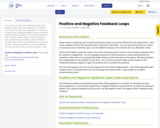
In this 15 minute video, Paul Andersen explains how feedback loops allow living organisms to maintain homeostasis. He uses thermoregulation in mammals to explain how a negative feedback loop functions. He uses fruit ripening to explain how a positive feedback loop functions. He also explains what can happen when a feedback loop is altered.
Also included is a concept map, slide show, worksheet and transcript of the video.
Transcript added from YouTube subtitles. You can use this to write your own worksheet or quiz.

"The Prairie Preacher" follows Dr. Dwayne Estes, a botanist who earned his nickname for his passionate advocacy of grassland conservation. Once a child who found solace in nature, Estes now dedicates his life to saving America’s most endangered ecosystem—Southeastern grasslands. Through the Southeastern Grasslands Institute (SGI), he works tirelessly to protect and restore these vital landscapes.

Explore the fundamentals of computer science by building an interactive computer model of cells in Scratch. No previous experience in computer programming is required. Programming Cells was created by Dr. Jeff Saucerman, Professor of Biomedical Engineering at the University of Virginia.

Water is the great architect of Earth and a defining factor for the location and movement of life on this planet. Without water, our world would look very different; without the watersheds which capture, coalesce, move, and recycle water throughout a natural system, human and wildlife habitats would not be the same. Freshwater rivers, streams, and lakes are some of the most heavily utilized and pressured natural systems on the planet; these critical habitats have taken the brunt of negative human actions for years. Now, more than ever, we must learn to safeguard our watersheds for the protection of all life that depends on them.For more information and classroom activities, please visit The Wildlife Center of Virginia and VPM UNTAMED websites.

Proteins carry out the essential functions of life processes through systems of specialized cells. The structure of DNA serves as a code for the production of proteins through the process of protein synthesis. Protein synthesis is a biochemical process that uses information coded in DNA to construct proteins. The central dogma illustrates the flow of genetic information in this process: DNA-->RNA-->Proteins. (Enduring Understandings of BIO.2d).This module was developed by Kris Scheible as part of a Virginia Commonwealth University STEM initiative sponsored by the Virginia Department of Education.

Students get a chance to review their proficiency with Punnett Squares through a "choose your own adventure" Google Slide challenge.
The use of Google Forms allows for content to be retaught, as well as allows students to go beyond the basic understanding of Punnett Squares.
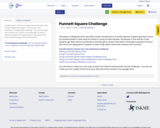
Students get a chance to review their proficiency with Punnett Squares through a "choose your own adventure" Google Slide challenge.
The use of Google Forms allows for content to be retaught, as well as allowing students the opportunity to go beyond the basic understanding of Punnett Squares.
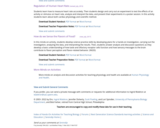
Students learn how to measure heart rate accurately. Then students design and carry out an experiment to test the effects of an activity or stimulus on heart rate, analyze and interpret the data, and present their experiments in a poster session. In this activity students learn about both cardiac physiology and experimental method.
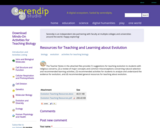
This annotated compilation of some of the best resources for teaching and learning about evolution includes activities, videos and articles. In the attached file, the first section provides general and introductory resources and the second section provides resources for understanding and analyzing the evidence.

Students will learn about how pixels make up images on a computer. They will complete an unplugged activity to create a pixelated image using binary digits. They will then create a pixelated image using more digits on an excel spreadsheet.
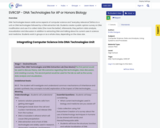
DNA Technologies lesson adds some aspects of computer science and "everyday relevance"/ethics to a unit on DNA technologies followed by a DNA extraction lab. Students create a public opinion survey on DNA modification and use it to collect data (the more the better). Afterwards, they perform data analysis, viusualization and discussion in addition to extracting DNA and talking about its current uses in science and medicine. Students work in groups or as a whole class, depending on the class size.
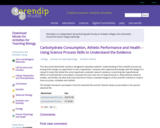
This analysis and discussion activity is designed to develop students' understanding of the scientific process by having them design an experiment to test a hypothesis, compare their experimental design with the design of a research study that tested the same hypothesis, evaluate research evidence concerning two hypothesized effects of carbohydrate consumption, evaluate the pros and cons of experimental vs. observational research studies, and finally use what they have learned to revise a standard diagram of the scientific method to make it more accurate, complete and realistic. The specific effects analyzed in this activity are the effects of carbohydrate consumption on athletic performance and the effects of low-carbohydrate diets on health.
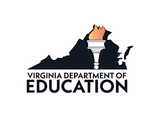
I am attaching an article that might be useful for high school biology teachers. It uses raw data to lead students through an open inquiry into Covid-19 cases. Enjoy!
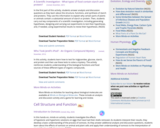
Students learn about scientific investigation by carrying out key components of the scientific method, including developing experimental methods, generating hypotheses, designing and carrying out experiments to test these hypotheses and, if appropriate, using experimental results to revise the hypotheses. Students design and carry out two experiments which test whether starch and protein are found in some or all foods derived from animals or plants or both.